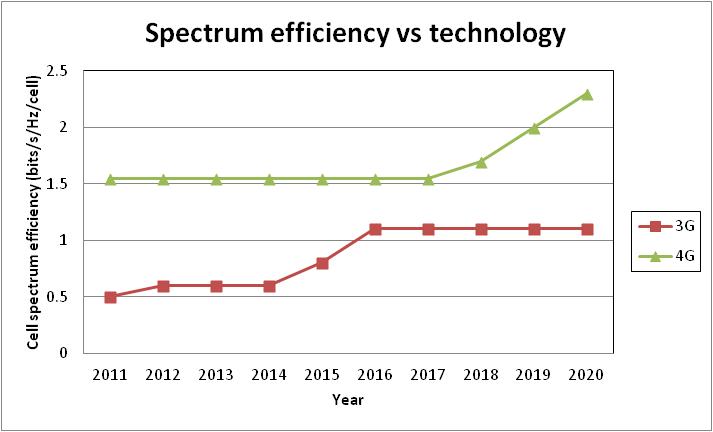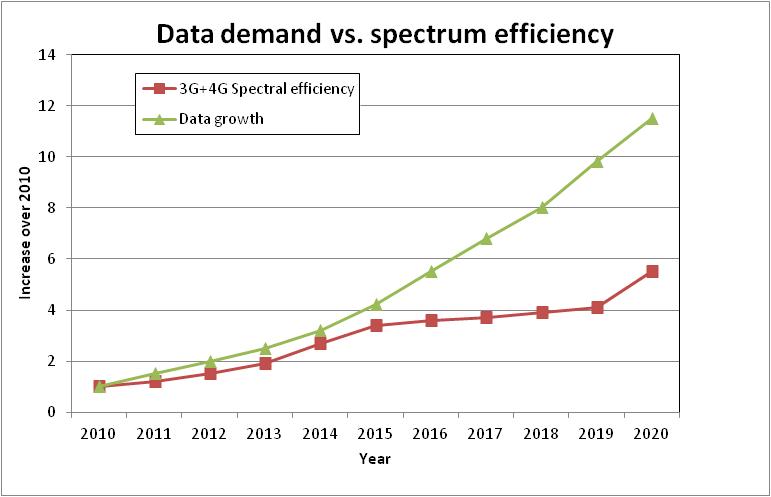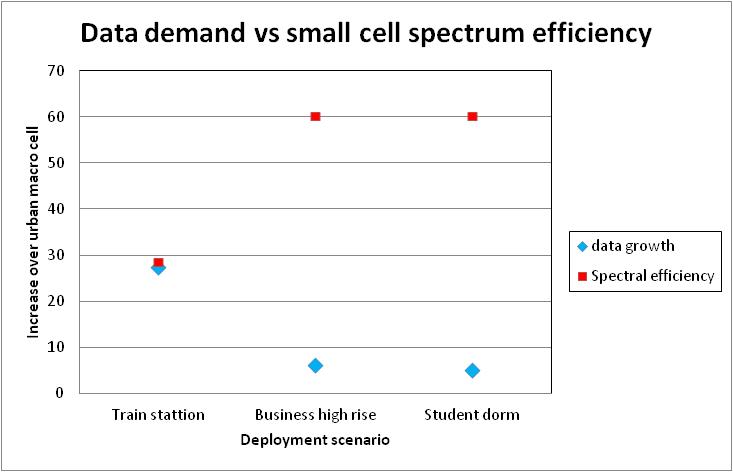The Role of Small Cells in Boosting Capacity in 4G Networks
Share

by Vladan Jevremovic, PhD, Director of Engineering Solutions, iBwave
Mobile networks worldwide are carrying increasing quantities of data traffic, reflecting customer demand for new services including broadband internet access via 3G modems, smart phones and other 3G enabled devices. The growth in data traffic over the last 2-3 years has been particularly rapid, and this growth is expected to continue over the next 3 years. Data growth rate estimate vary among different sources, but is generally in the compound annual growth rate (CAGR) range of 25-100%. Here we will explain three different ways to satisfy the demand for data in the long run using technology, spectrum and network topology.
One potential avenue for expanding the capacity of mobile networks is the evolution from 3G to 4G. Among the key differentiators for 4G systems is increased spectrum efficiency relative to 3G. The capacity gain brought on by implementing new technology is so called “technology” gain. In the figure below, we compare spectrum efficiency of 4G vs. 3G technologies over the next 10 years, assuming dense urban topology [1]:
The question then becomes: is the combined growth of 3G and 4G spectrum efficiency enough to cover the data demand growth over the same time period? Analysts vary in the assessment of the projected 10 year data growth, but in general 28% data CAGR (compound annual growth rate) is considered modest. If we start with Year 2010 as the benchmark year for data demand and spectrum efficiency, we can normalize both data and spectrum efficiency growth and show them as multipliers of Year 2010. The comparison is shown in the following figure [1].
It is clear that by Year 2020, spectral efficiency growth will be only about half of the projected data growth. Therefore, the switch to 4G technology alone will not be able to close the gap between the market demand and available technology resources. That leaves us with the question: how are we going close the gap?
One option is for the telecom governing body to make available additional spectrum for wireless broadband. In both UK and US, the telecom governing bodies announced plans to release at least 500 MHz of public sector spectrum over the next 10 years for mobile communication uses. The capacity brought on by releasing additional spectrum is called the “spectrum” gain. However, in some countries freeing up such massive amount of spectrum is not feasible, so an alternative solutions needs to be found out.
Yet another option is to implement small cells (pico and femtocells) in the areas where high concentration of users is coupled with very high usage demands. Examples of such locations are train stations, business high rise towers and university student dorms. Small cells increase capacity by the virtue of improved signal to interference and noise ratio (SINR) in their immediate vicinity, which in turn allows higher order modulation to be transmitted. An example of such modulation is 64 QAM, which also has high spectrum efficiency which we seek out. This is so called the “topology” gain.
While the actual spectrum efficiency per cell improves slightly, the actual “topology” gain over the area of a macro cell is improved many times, because it takes many small cells to cover the same area that a macro cell can cover. In the following figure we show comparison between data demand and small cell spectrum efficiency for selected deployment scenarios [1].
In the above deployment scenarios, the train station is covered with an equal mix of pico cells and femtocells, while the other two are covered with femtocells only. The train station scenario shows that data demand growth is equal to the “topology” spectral efficiency gain. For the business high rise and university student dorm scenarios, gain in “topology” spectral efficiency is far bigger than increase in data growth.
In these scenarios, we see that “topology” gain brought on by small cell deployment may offset data growth demand. Therefore, adding spectrum to satisfy data growth might not be necessary. Here we implicitly assume that the cost of small cell deployment is favorable, and that small cell interference can be managed. While we have seen positive industry trends in both areas (the cost per femtocell has been steadily declining, the inclusion of HetNet and SON in LTE), these issues are crucial in determining the role of “topology” gain in boosting capacity and saving spectrum in 4G networks.
Source: [1] “4G capacity gains final report v1.5”, Real Wireless, 27th January 2011
- Wi-Fi Design Strategies in a Converged World Webinar Questions Part 4: Industry Related Questions - December 4, 2017
- Wi-Fi Design Strategies in a Converged World Webinar Questions Part 3: iBwave Products - October 5, 2017
- Wi-Fi Design Strategies in a Converged World Webinar: Your Questions Answered. - August 9, 2017




























